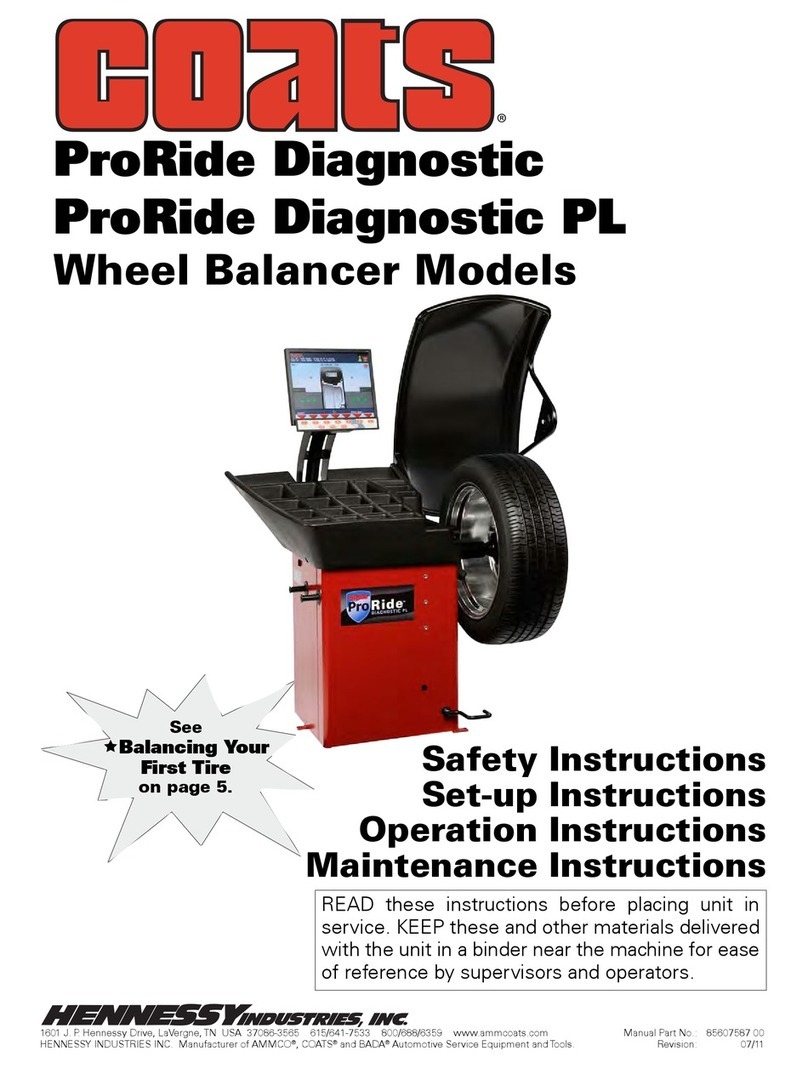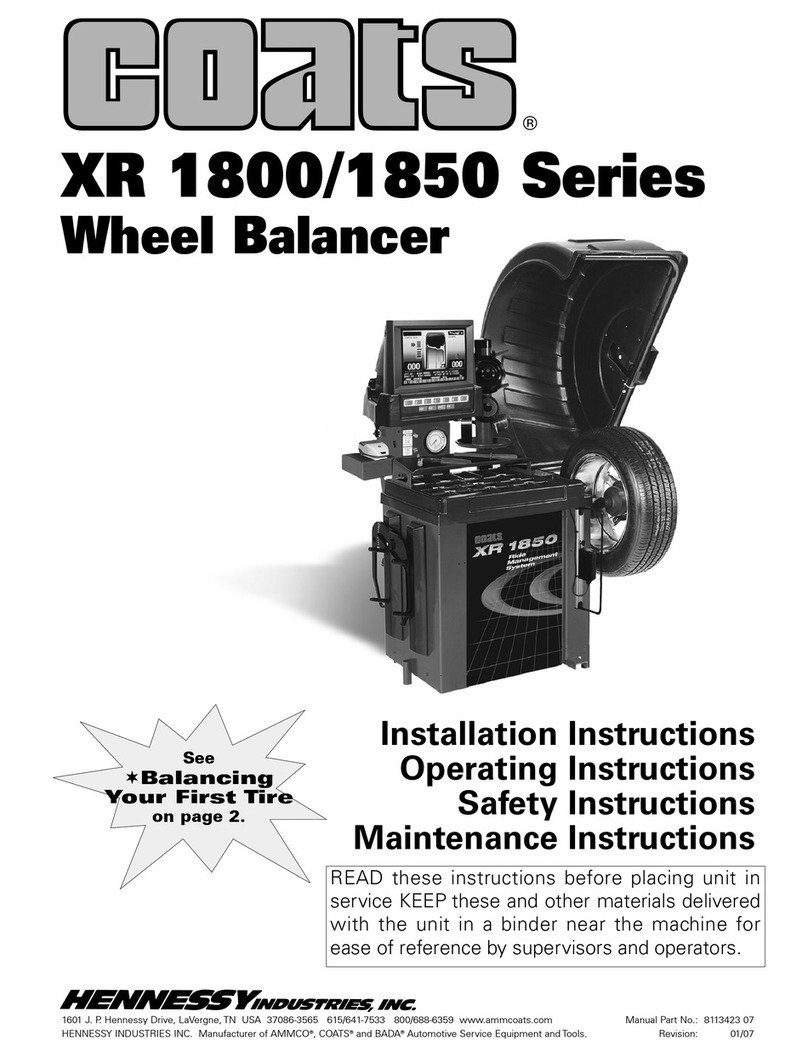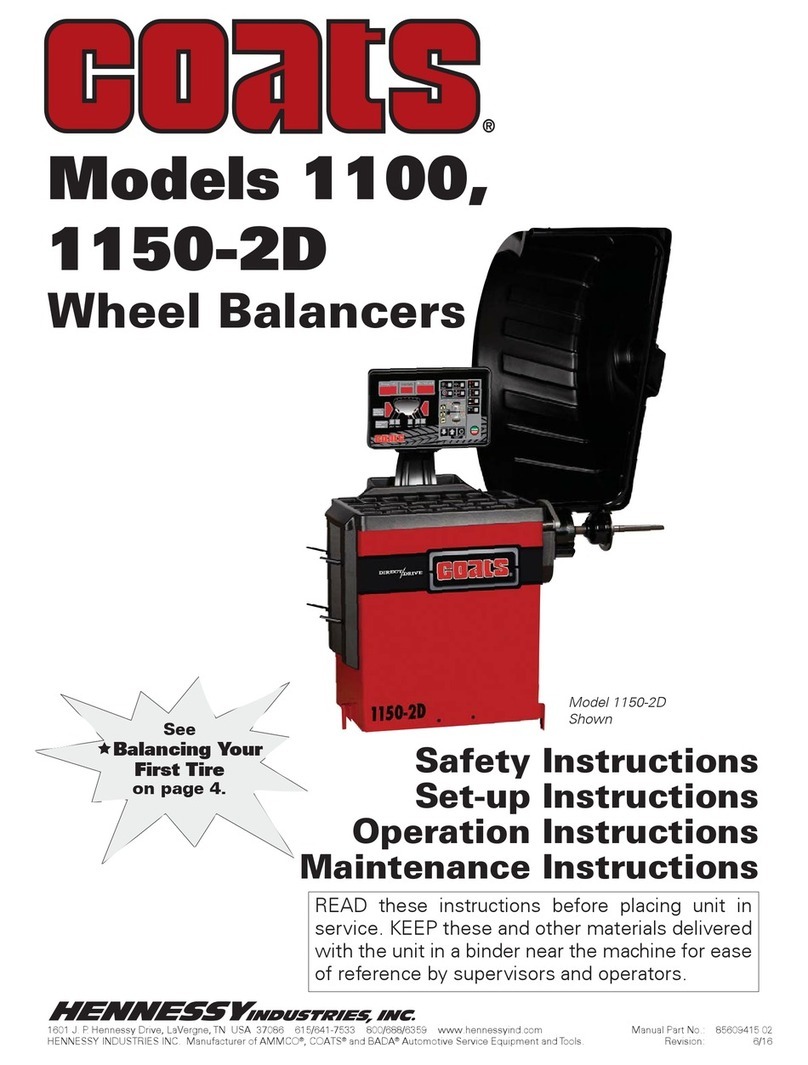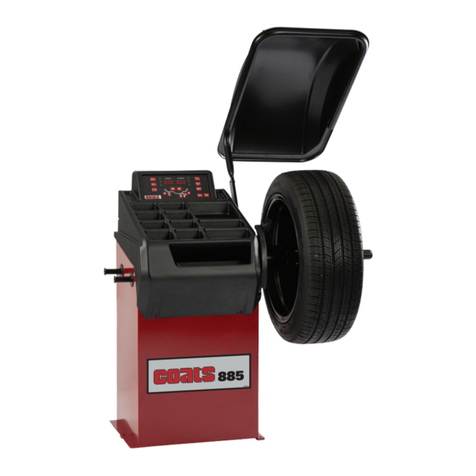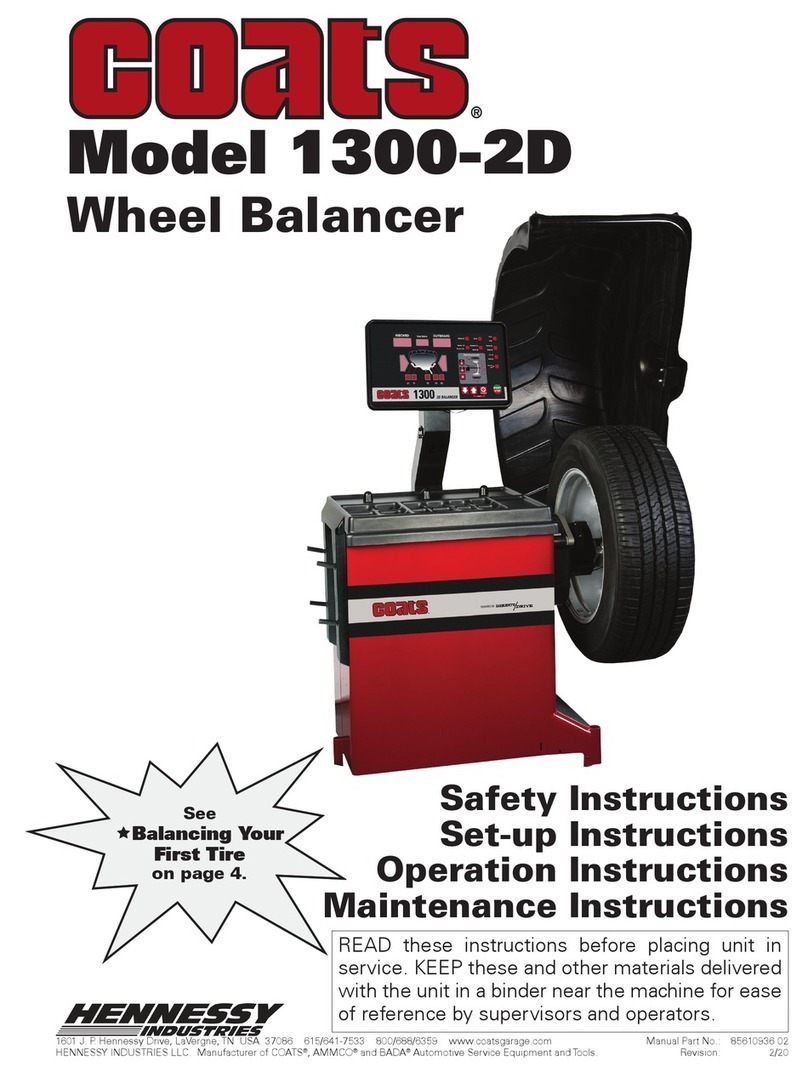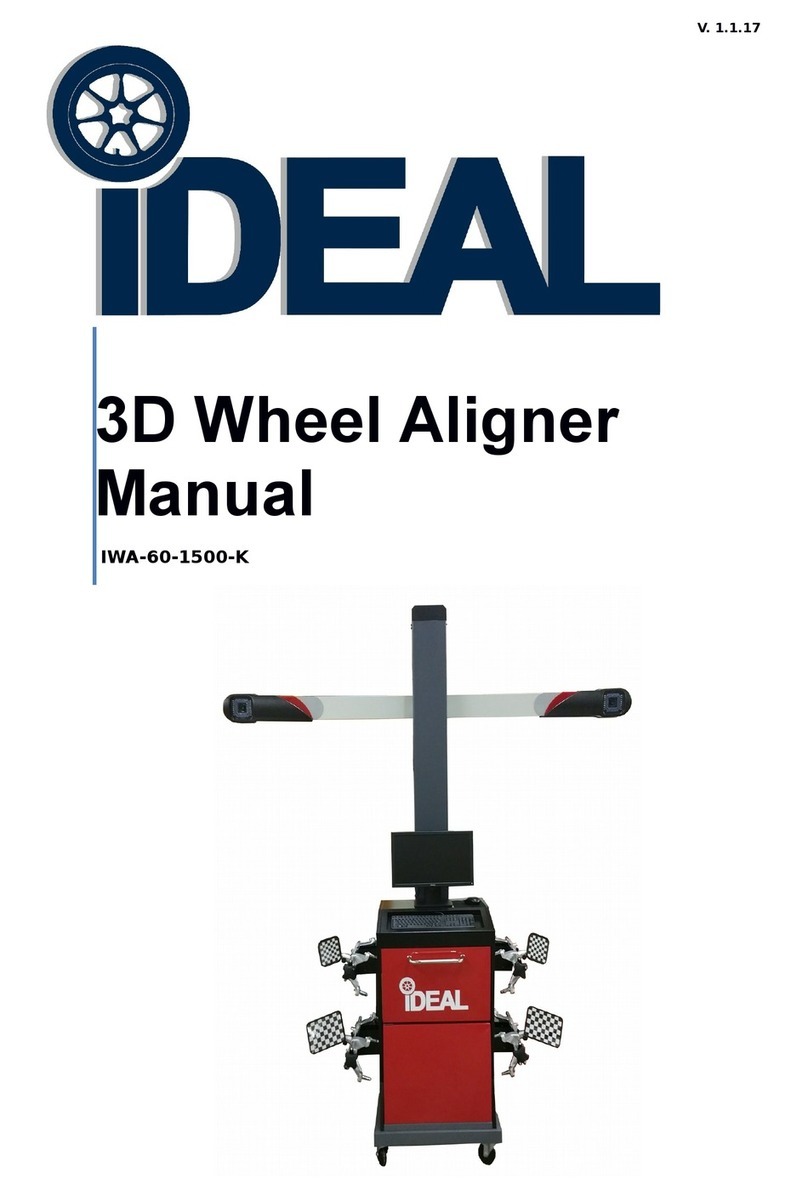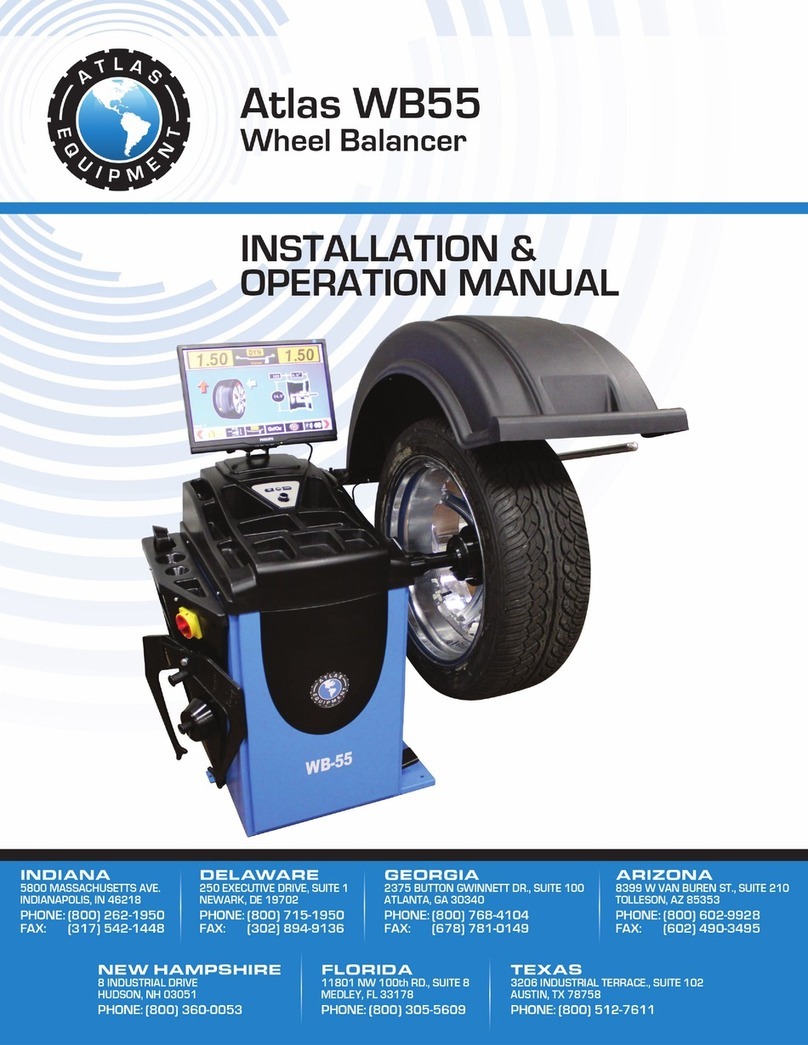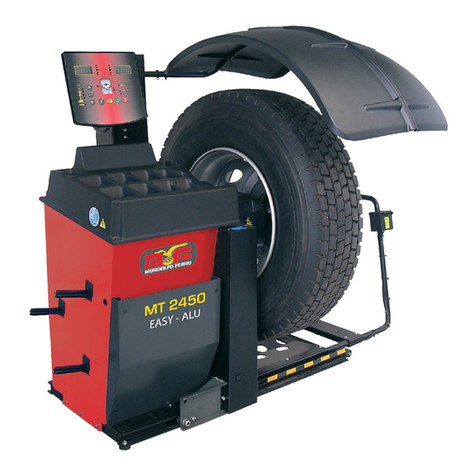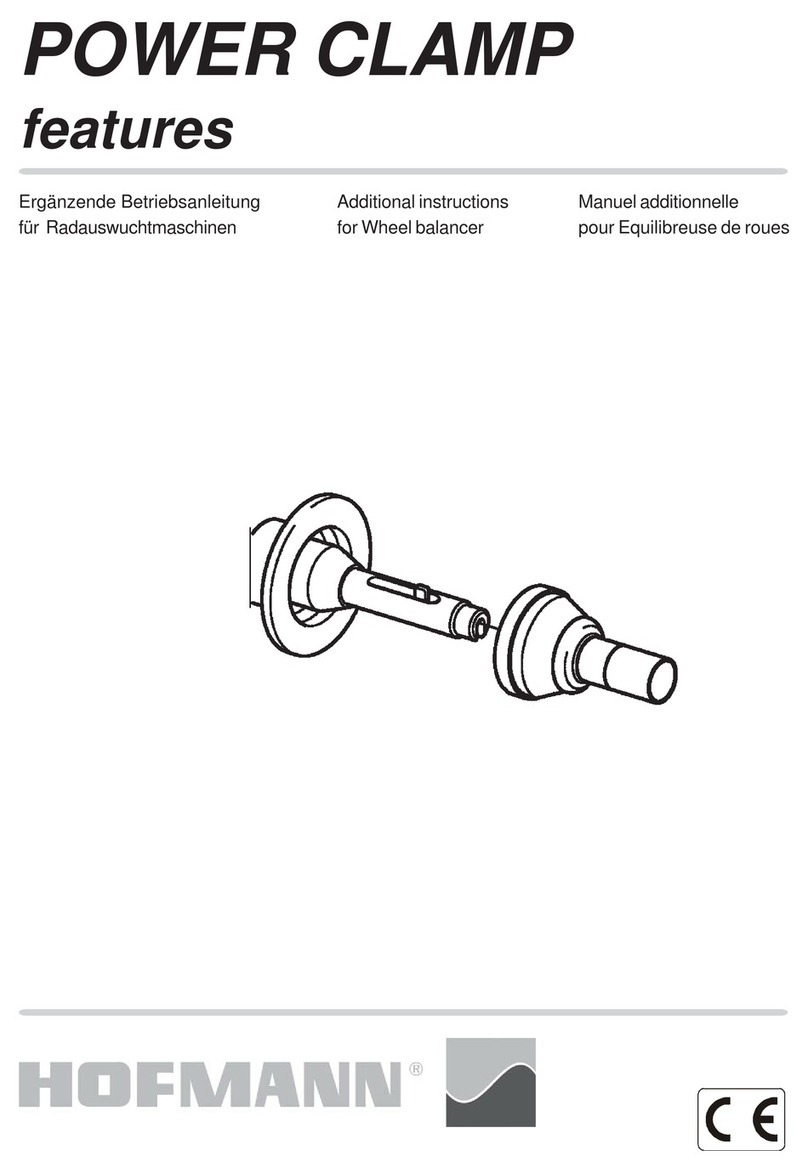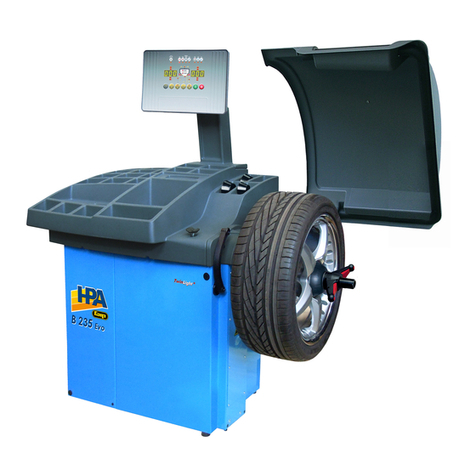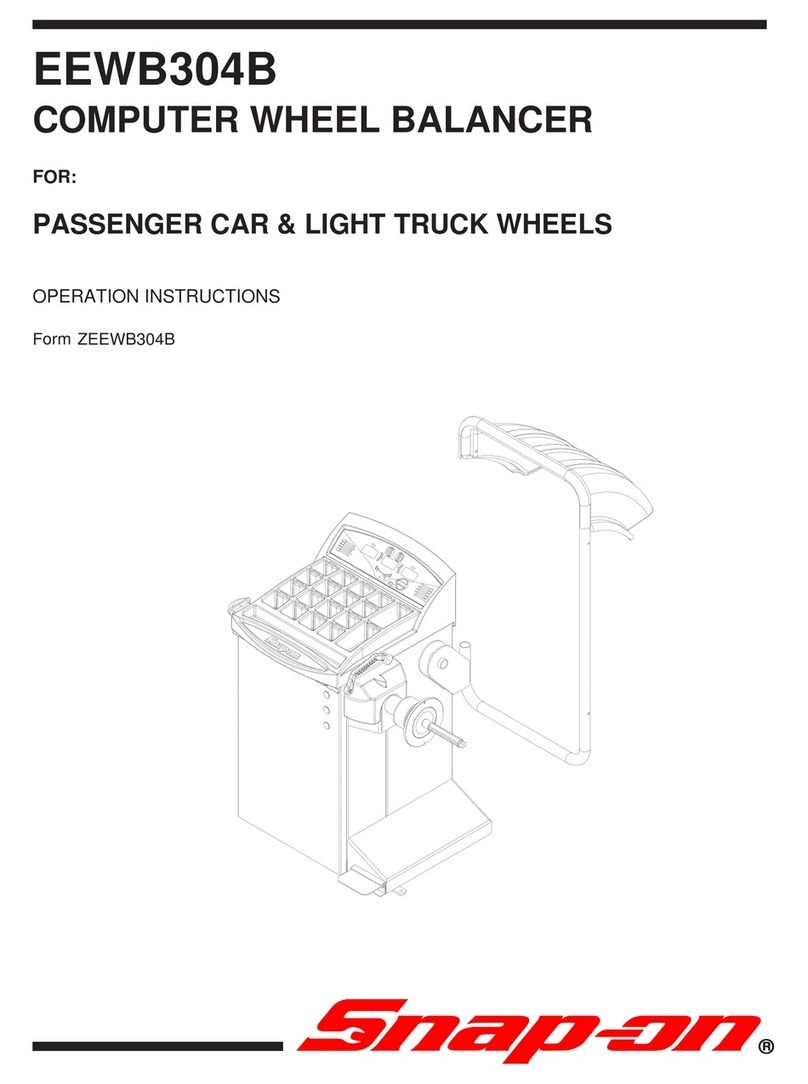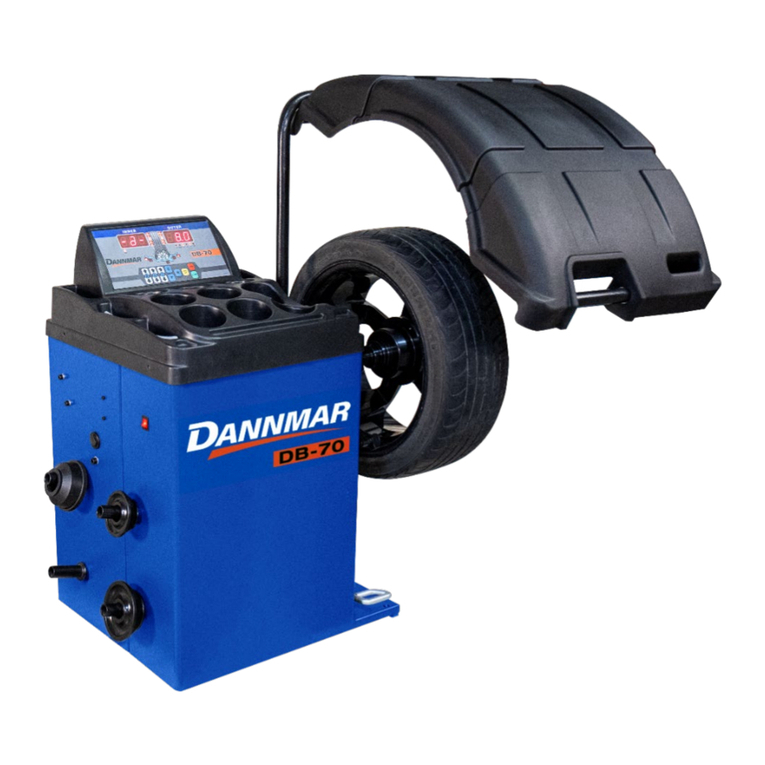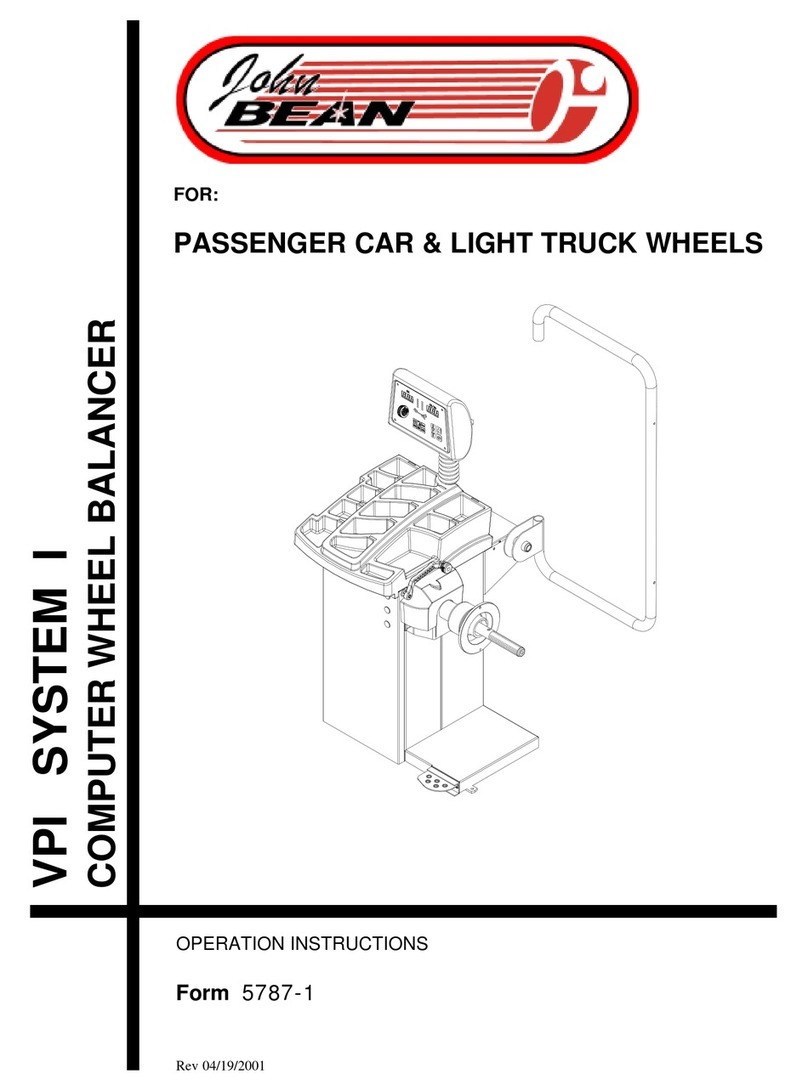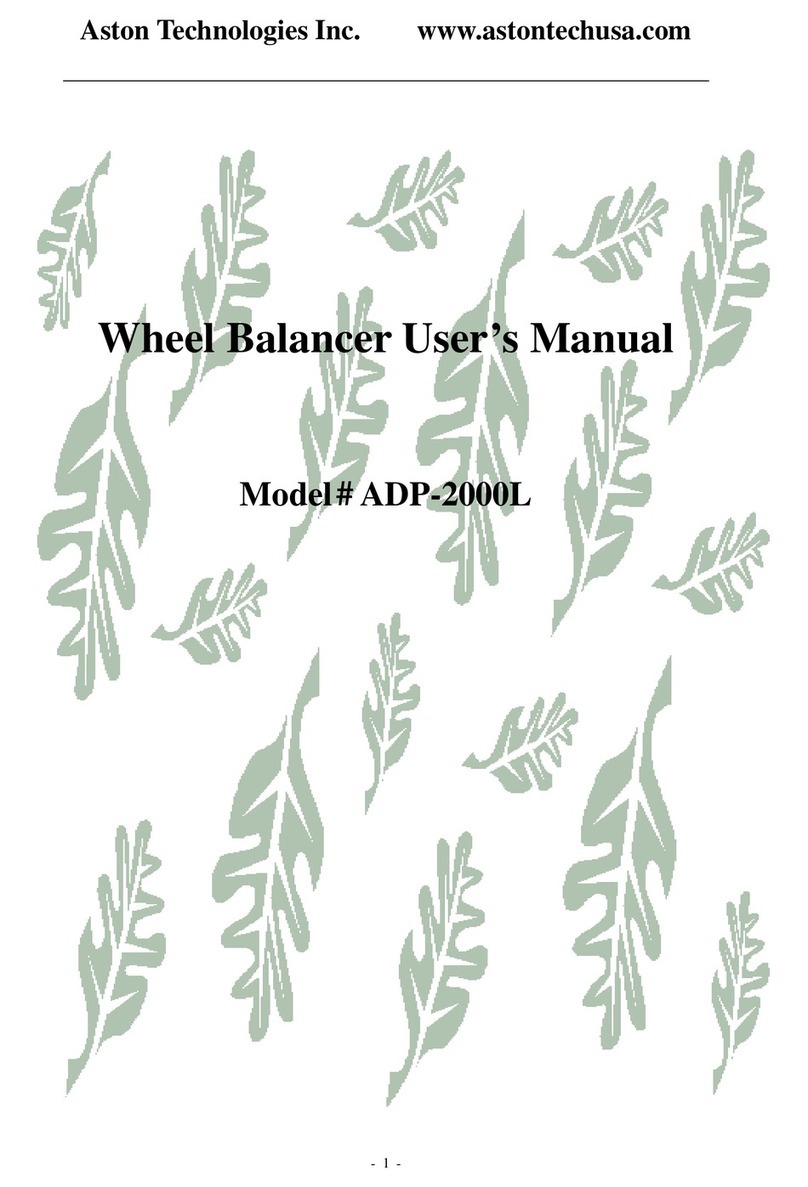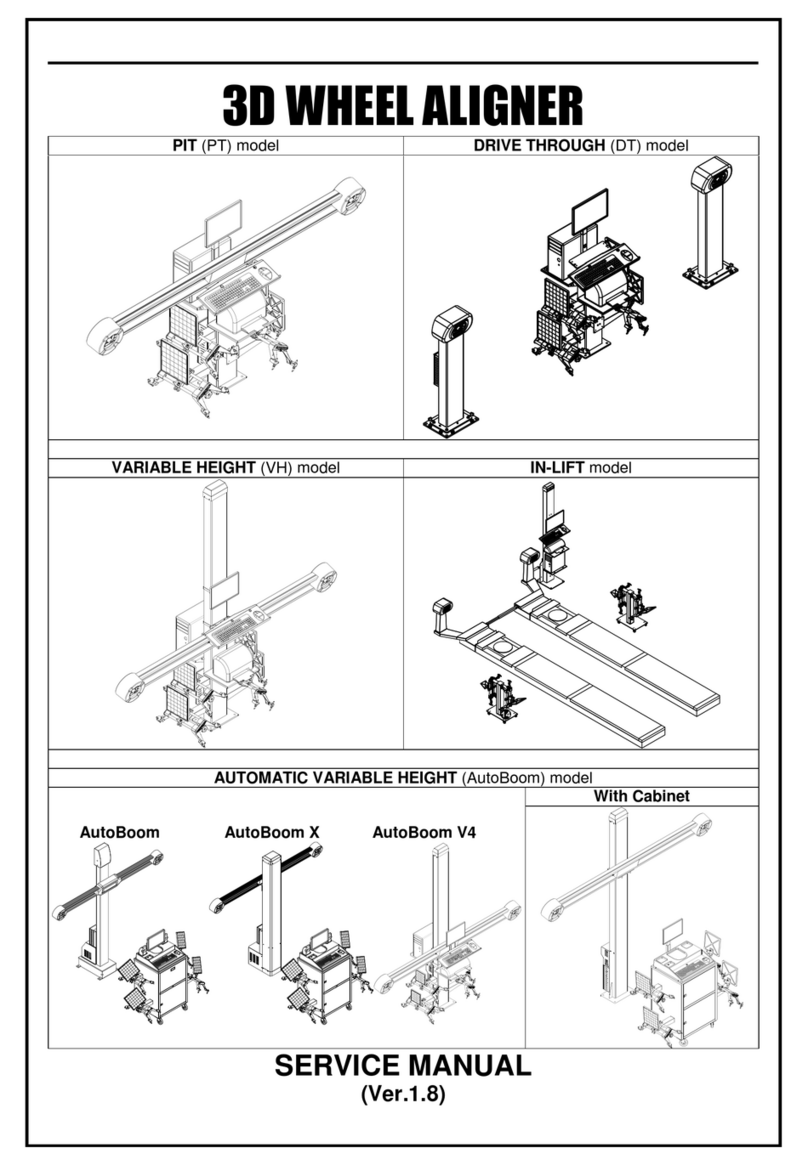Service Manual — COATS Model IBS 2000 • 5
Installation Instructions
Unpacking and Setup
1. Remove the staples from around the bottom of the
carton, and carefully remove the box.
2. Unstrap and remove the hood, accessory box and all
packing.
3. Inspect the unit and all accessories for damage.
Note: Report any damaged or missing parts to
the Hennessy Order Entry Department imme-
diately. CALL 1-800-688-6359.
4. Remove the three (3) hold down brackets from the
machine & pallet. Do not discard. Retain for the customer,
he may wish to use them to bolt his unit to the floor.
5. Remove the balancer from the pallet.
Caution! This unit is very heavy and will
require assistance for lifting and moving. DO
NOT DROP! DO NOT LIFT BY THE MOTOR
SHAFT!
Note: If there is a bolt on the back of the hood
support bracket, near the bottom right side of
the accessory column, REMOVE IT. It will inter-
fere with the hood installation.
6. Remove the Allen head bolt at the bottom of the pod
tube, and retain for later use.
7. Loosen the four (4) bolts on the tube brackets, and
slide the tube into position with the locating ring.
8. Install the Allen head bolt.
Caution! Be careful not to damage the wire
harness.
9. “Snug” the bolts on the tube brackets, but do not
overtighten. The Pod should swing with some resistance,
but not loosely.
10. Push the harness into the pod tube, and install the
plastic cover.
11. Check the power plug with the phase of the
machine on the serial tag. Make sure the plug matches
the customers outlet.
Hood Installation
1. Install the hood magnets (two sets, for hood switch
and interlock switch to the holes on the hood cam. The
nylon washer goes between the magnets and the cam.
Do not over tighten, or the magnets will break.
2. Slide one of the nylon bushings onto the hood bar,
flange to the cam.
3. Lift the hood up and slide the bar into the machine,
you may need assistance. Let it rest on the hood stop.
4. Slide the other nylon bushing into position from the
inside, slide on the washer and the retaining ring.
5. Attach the hood spring. The straight end goes at the
bottom of the machine the hook end into the hood.
Note:The hood must be in the raised position,
to install the spring. For Safety, you should
have someone support it.
Faceplate Assembly Installation
1. Remove the hub nut and cones from the threaded
shaft. Store on the accessory pegs.
2. Clean the contacting surfaces of both the motor shaft
and faceplate assembly with a soft cloth. Note the wit-
ness marks on both, these should be aligned before
installing.
3. Slide the 6 inch socket head bolt (included in the parts
bag) and the (5/16 X 6") Allen wrench extension into the
faceplate assembly. Hand tighten.
4. Attach the torque wrench. Hold the faceplate with
one hand to keep from turning. Tighten to 20 ft/lb.
Caution! DO NOT OVER TIGHTEN. Over tight-
ening will result in damage to the motor shaft.
5. Dial indicate the faceplate and shaft assembly there
should be not more than .002-inch on the faceplate and
not more than .001 runout on the shaft. If so refer to
Faceplate Assembly Replacement procedures.
Preliminary Inspection
1. The floor should be a solid, flat surface that does not
allow the balancer legs to set into a recess in the floor or
sink into the floor itself.
2. The balancer should sit on all three (3) legs. Make
sure the legs have not filled with dirt, wheel weights, or
any foreign matter that may prevent a leg from making
contact with the floor.
3. Inspect all cones, hub nut, pressure cup, motor shaft,
faceplate, and shaft assembly for damage. Missing parts
or accessories should be reported immediately to
Hennessy Order Entry Department at 1-800-688-6359.
4. Check the power supply to the balancer. Refer to the
VOLTAGE CHECKING PROCEDURE.
5. Check the operation of the cooling fan on the drive
motor. The fan should run as soon as the balancer is
turned on. If not, check the breaker on the Accessory
Column of the balancer. If it has tripped, reset it. If it will
not reset refer to the PRECHECK procedure.
6. Check the rotation of the motor. Press START, does
the motor spin clockwise? If not, for a 3ph Balancer -
switch any two of the hot leads on the plug.
Direct Drive

